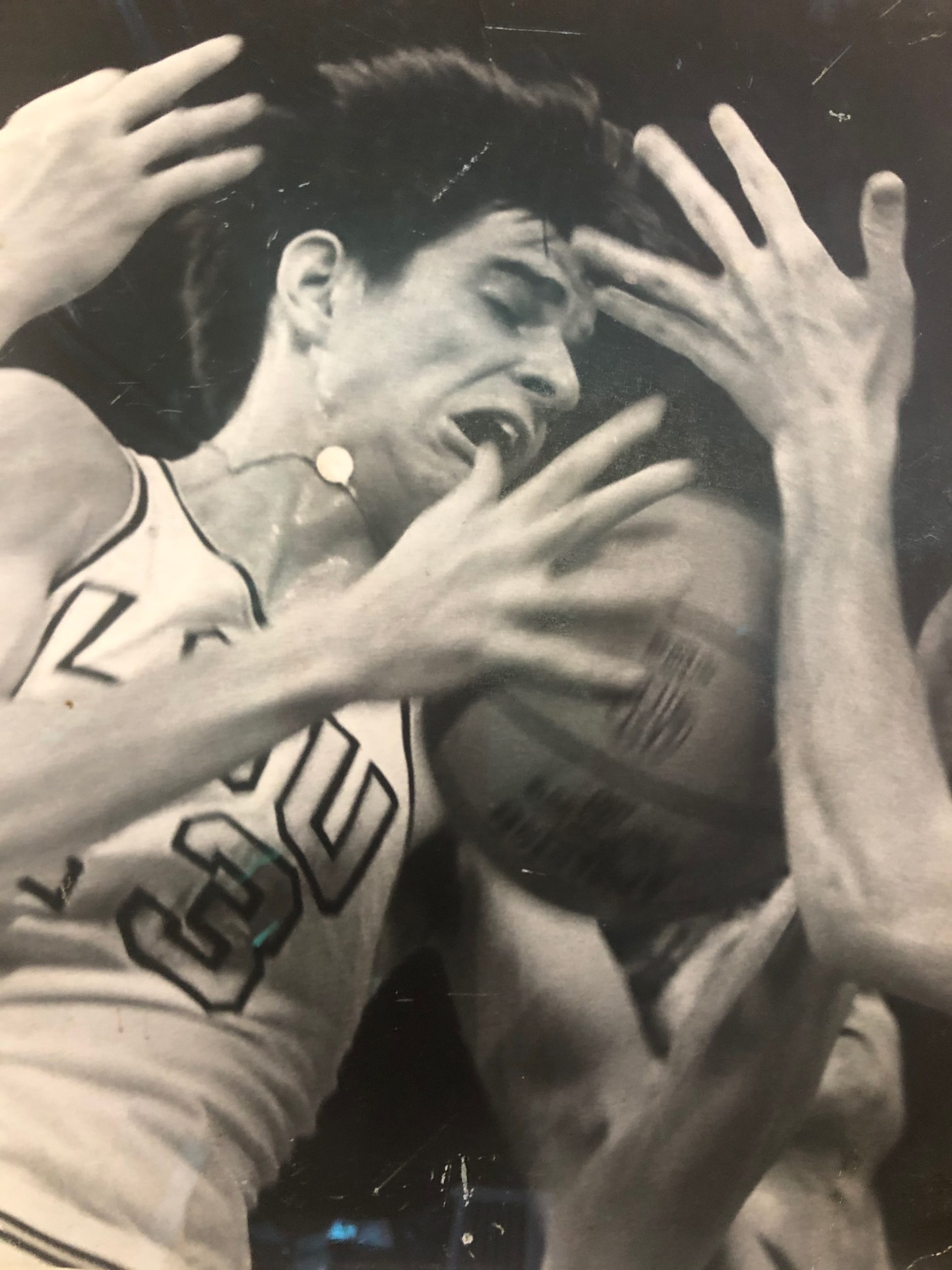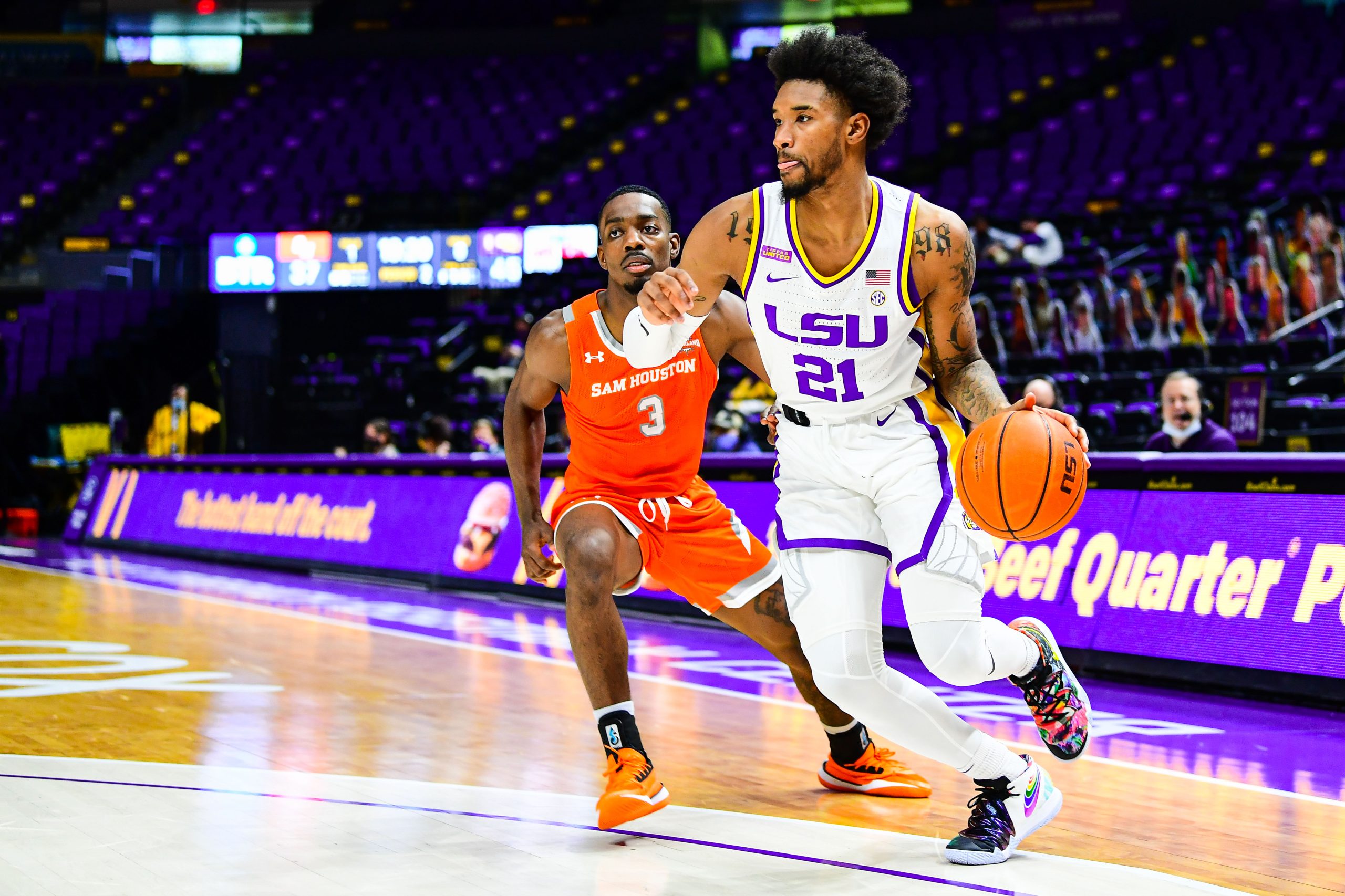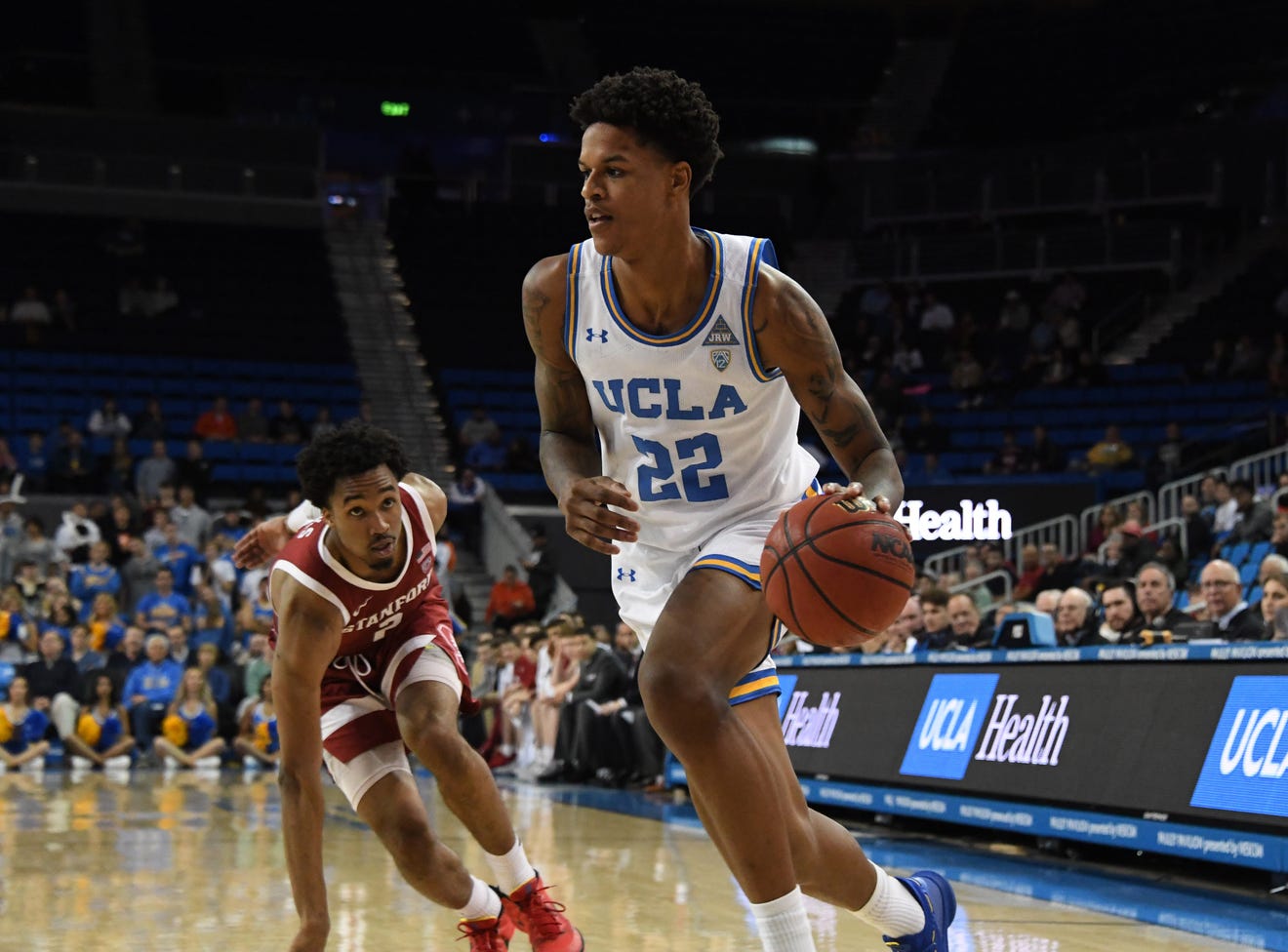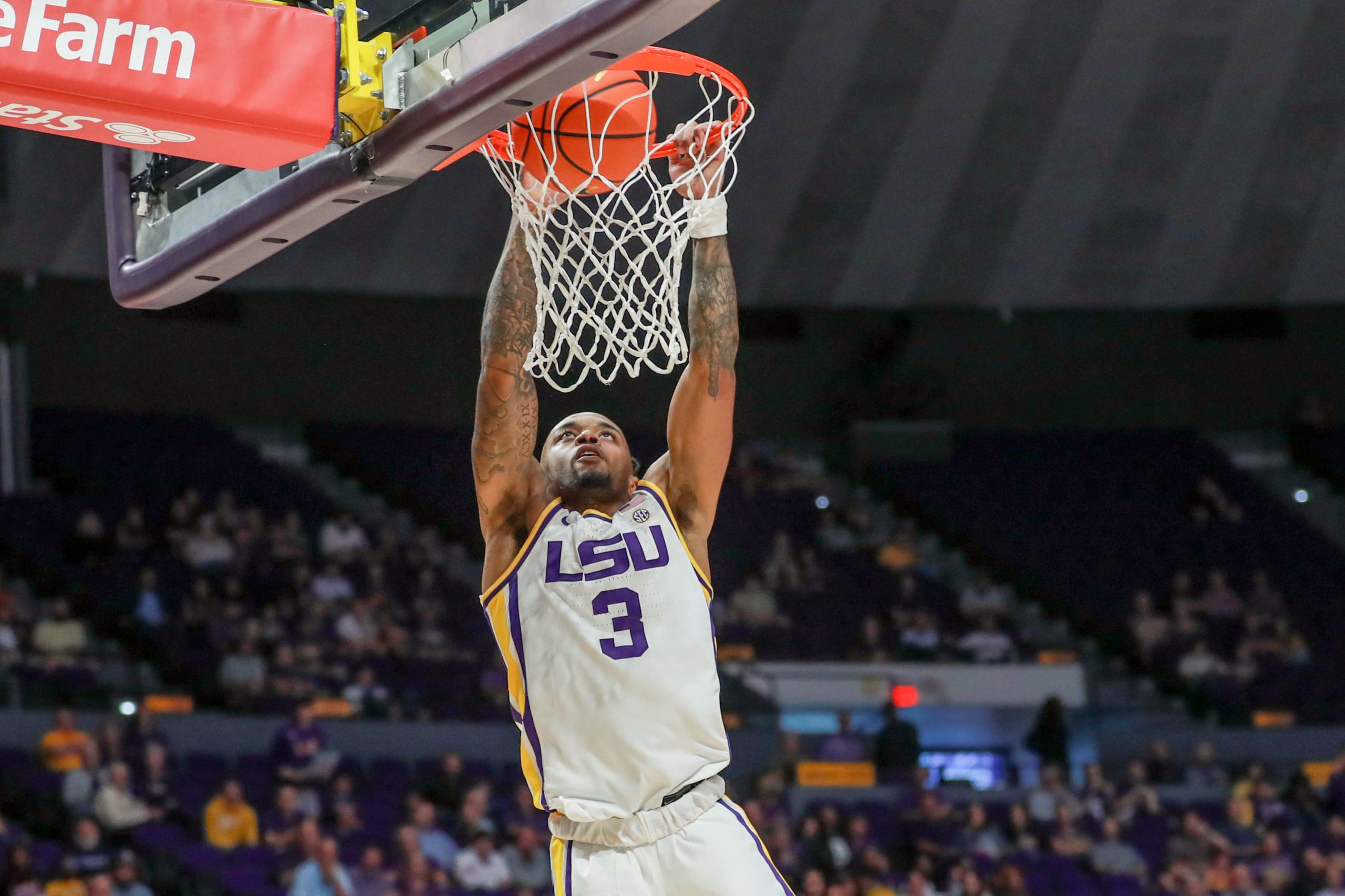
It’s crazy to consider 50 years ago on January 31, 1970, almost 12,000 people crammed into LSU’s John M. Parker Agricultural Center confidently expecting to see someone score 40 points against Ole Miss to become college basketball’s all-time scorer.
In the last 20 years of SEC basketball, with bigger, stronger and supposedly superior athletes playing in a sport that has a 3-point line and a shot clock, there have been just 10 40-point games.
But that night a half-century ago, 40 points in a game was a given when you’re talking about LSU’s “Pistol Pete” Maravich.
The most high-volume scoring machine the sport has ever seen averaged an unfathomable 44.2 points during a three-year Tigers’ varsity career from 1967-70 in which he scored 40 or more points in 69 percent of his 83 games.
It was so much a given Maravich would pass former Cincinnati star Oscar Robertson’s NCAA record of 2,973 points set in 1957-60 that it was never a point of conversation among Maravich’s teammates.
“We really did not talk about it,” said Rich Hickman, who was part of Maravich’s recruiting class in 1966 and was a starter in the backcourt with him on the freshman team and for two seasons on the varsity. “We knew it was inevitable. We were playing with the greatest NCAA basketball player who ever walked the face of the earth.”
Hickman, who lives outside of Dallas, will be in the building today named after his late teammate – the Pete Maravich Assembly Center – for an 11 a.m. game against Ole Miss that will commemorate the 50th anniversary of the Pistol becoming the NCAA scoring king.
Rewind back to the fall of 1966 when the 6-4, 160-pound Maravich reported to the LSU campus, a signee and son of then-new basketball coach Press Maravich.
Upon first glance, young Peter Maravich looked malnourished.
Ace Higgins, my dad and then-LSU sports information director told a 10-year old me, “I met the new basketball coach today. He told me he has a son who’s a pretty good player, but I don’t know about that. I met him and he’s pretty scrawny.”
But Maravich put on a basketball court and from day one he possessed indescribable innovative skills that belied his rail-thin physique.
”I remember when I was a senior and our assistant coach Jay McCreary told me that the new kid Maravich was a hell of a player,” said Brad Brian, who was LSU’s radio analyst during the Maravich era.
”And when I saw this terrible skinny-looking kid walk on the floor to play pickup ball with us for the first time, I started chuckling.
”After we played for an hour and he threw passes I’d never seen before, I went straight to a phone to call my brother. I told him, ‘Come out to LSU tomorrow and buy all the season tickets you can. I just played against the finest basketball player I’ve ever played in my life.’”
While Maravich’s scoring managed to get the attention of the national media, it was his imaginative passing and creative ball-handling that packed gyms. Every fastbreak was an adventure as he fired passes between-the-legs, behind-the-back, behind-the-neck, no-looks and ones he created at the spur of the moment.
It wasn’t easy playing with Maravich, who was given the green light by his father to shoot as many times as possible, which turned out to be 38.2 career attempts per game.
“Press’ main objective was to make Pete the most prolific scorer in the history of the game,” Hickman said. “We (the rest of the team) knew we were there to form a unit to support LSU and Pete.
“Some players we signed couldn’t handle it because they came out of high school used to being stars. They just left LSU and went somewhere else.”
Yet Hickman, a sweet-stroking right-handed shooter from Maravich’s hometown of Aliquippa, Pennsylvania, went the distance. He gathered incredible memories that haven’t faded, like that historical night against Ole Miss when the Pistol became college basketball’s scoring king.
Bud Johnson, then-LSU’s basketball publicist, remembered having no empty seats on press row for the first time.
I ought to know. I squeezed into one as a 13-year old kid who had the good fortune of watching all of Maravich’s home games, even his magical first year when he played on the freshman team because signees weren’t eligible to play for the varsity.
“We had a lot of national press there (at the scoring record-breaking game) that we never had before,” Johnson said. “One of Pete’s goals was to get to New York City to play in the NIT in Madison Square Garden, the mecca of basketball.
“So, while Oscar Robertson’s record was important, Pete wanted to make a good impression in the national press, particularly the East Coast writers who had never seen him play. He felt it would get LSU to the NIT.”
When the moment arrived for Maravich to break the record, he missed five straight shots.
“Everybody in the stands knew, every time he went up, everybody was like `this is it,’ it was almost like it was in slow motion anticipation of it happening,” Hickman remembered. “He’d shoot, everyone would go silent and then there was collective `arrrrrgggggg’ when he missed.
“But when it made it, it was almost like an earthquake. That old barn was shaking.”
Maravich loved playing in the Ag Center, which had a unique charm.
The arena, designed for rodeos and horse shows, was named for former Louisiana Governor John M. Parker who pushed for the LSU campus to be moved to its current location. The building opened in 1937 as the largest coliseum in the United States.
The arena didn’t have air conditioning or heating until 1965. When there were heavy rains, the copper roof leaked forcing LSU to move two home games to local high schools.
The basketball court was laid over the dirt floor. Sometimes when there was a breeze from the lower open end of the arena leading to the livestock barn, the smell of horse and cow manure would waft over the court. There were also the occasional horseflies that made it from the barn to the court that caused players flick their hands to rid themselves of the pesky dive-bombing insects.
And because of an annual horse show in November and rodeo in February, the basketball team didn’t get into the Ag Center for preseason practice until about a week before the first game and always ended the season with a string of road games.
“We had to practice in preseason at University High on campus with its short floor,” Maravich remembered years ago.
Yet, the Pistol adored playing on a home court that he once described as having “the smell of livestock, mingled with popcorn and cigarette smoke.”
“He always commented that the floor was great for his legs,” former LSU basketball trainer Billy Simmons explained in a Maravich biography, “because it was set on piers and beams rather than a concrete slab, making the floor soft.”
The scene that always stands out after Maravich swished his NCAA career scoring record-breaking 18-foot jumper is a five-minute or so celebration in which then-WAFB-TV sportscaster Bob Scearce is doggedly trying to conduct an on-court interview with Maravich.
“There were still more than five minutes left to play, but I don’t think Bob realized or cared about it,” Johnson said. “He wanted his interview.”
Pete’s best postgame quote after he finished with 53 points in a 109-86 win was about how he missed those consecutive shots before he broke the record.
“Maybe I was worried subconsciously about the record,” he said, “but I also knew I had 13 more games to do it. My dad said it would be fun to average just three points and 20 assists the rest of the way to keep people in suspense.”
Even today, after his 10-year NBA career and an untimely death in January 1988 playing pickup basketball in Pasadena, Calif. because of an undetected heart defect, Naismith Basketball Hall of Famer Maravich holds 21 LSU, 16 SEC and 14 NCAA records. That includes 3,667 career points in three varsity seasons long before the college game adopted the 3-point shot and shot clock.
He had a transcendent style that touched decades of players. An example are the tributes on the dust cover of his “Maravich” biography that came from NBA stars covering seven decades.
The last accolade?
“I learned all my tricks from Pete Maravich,” said Kobe Bryant, who died last Sunday at age 41 in a helicopter crash in Calabasas, Calif. 33 miles from where Maravich passed just more than 32 years ago at age 40.
The Pistol’s legend, mostly thanks to YouTube, has never faded.
Unfortunately, the one Maravich play that isn’t on film anywhere is the greatest shot of his career, an almost half-court hook at the final buzzer in a double-overtime road victory at Georgia to close his junior season in 1968-69.
The game probably shouldn’t have got to overtime. Georgia led by 15 points in the second half, but Maravich scored LSU’s last 17 points as the game marched into an extra period. He forced a second overtime with a game-tying jumper.
It was then he scored nine more points to give LSU an eight-point lead with a minute left. That’s when Press Maravich called for “Lucky 7,” the Tigers’ offense to kill the clock.
“Pete starts all his between-the-legs, behind-the-back dribbling and none of the Georgia players can catch him to foul him,” Hickman said. “As the clock wound down, he was on the left side of the court near midcourt facing the basket and I was in the same place on the right side.
“He gave me a look that said, `Get out of the way, I’m coming over there.’ He dribbles all the way across the court to where I had been, he’s almost out-of-bounds, he looks at the game clock, looks at the basket and throws up a hook shot.
“Then, he turns away with his back to the shot and throws both of his arms over his head. He never sees the ball go in the basket as the buzzer sounds. He knew the shot was good when he took it.”
Maravich didn’t just make the shot for his 57th and 58th points of the game. His aim was so perfect that his Harlem Globetrotter-like hook swished with such force it hung the net.
It’s a moment in time that wasn’t cinematographically preserved .
“The game wasn’t televised, and all the Atlanta TV stations already left before the game got to overtime because it was so late,” Hickman said. “Our team cameraman ran out of film at the end of the first overtime.”
Georgia players, like Herb White who was later Maravich’s teammate with the Atlanta Hawks, said Georgia coach Ken Rosemond was so angry about Maravich’s hook shot that he burned Georgia’s copy of the game film.
Fortunately for Hickman, he was there.
He lived that moment and so many others that will come flooding back today when he’s staring at the PMAC replay board and watching a Maravich tribute showing his old teammate making a fool of the opposition.
“I’m 71 years old and retired,” Hickman said. “But there are still people that find out I played with Pete. They say, `Are you kidding me? Pistol Pete Maravich? Tell me about it.’
“It still makes me smile that people remember who he was and what he did for the game of basketball.”
It makes all us old guys warm and fuzzy, Rich.
Each and everyone of us who removed the elastic so we could have lucky floppy socks like the Pistol.




Great article, Mad Dog. Did you read the part of Dr’ J’s biography where he talked about playing with Pete for that short time when the Hawks had the rights to Erving? He said they used to pay one-on-one for dinner after practice. They split about 50-50. Can you imagine if we had cell phone videos of those matches? Again, great writing.
Doug
Never get tired of stories about the Pistol.
Great article Ron! I really loved the part about sharing the ag center with the rodeos and horse shows!! ??????